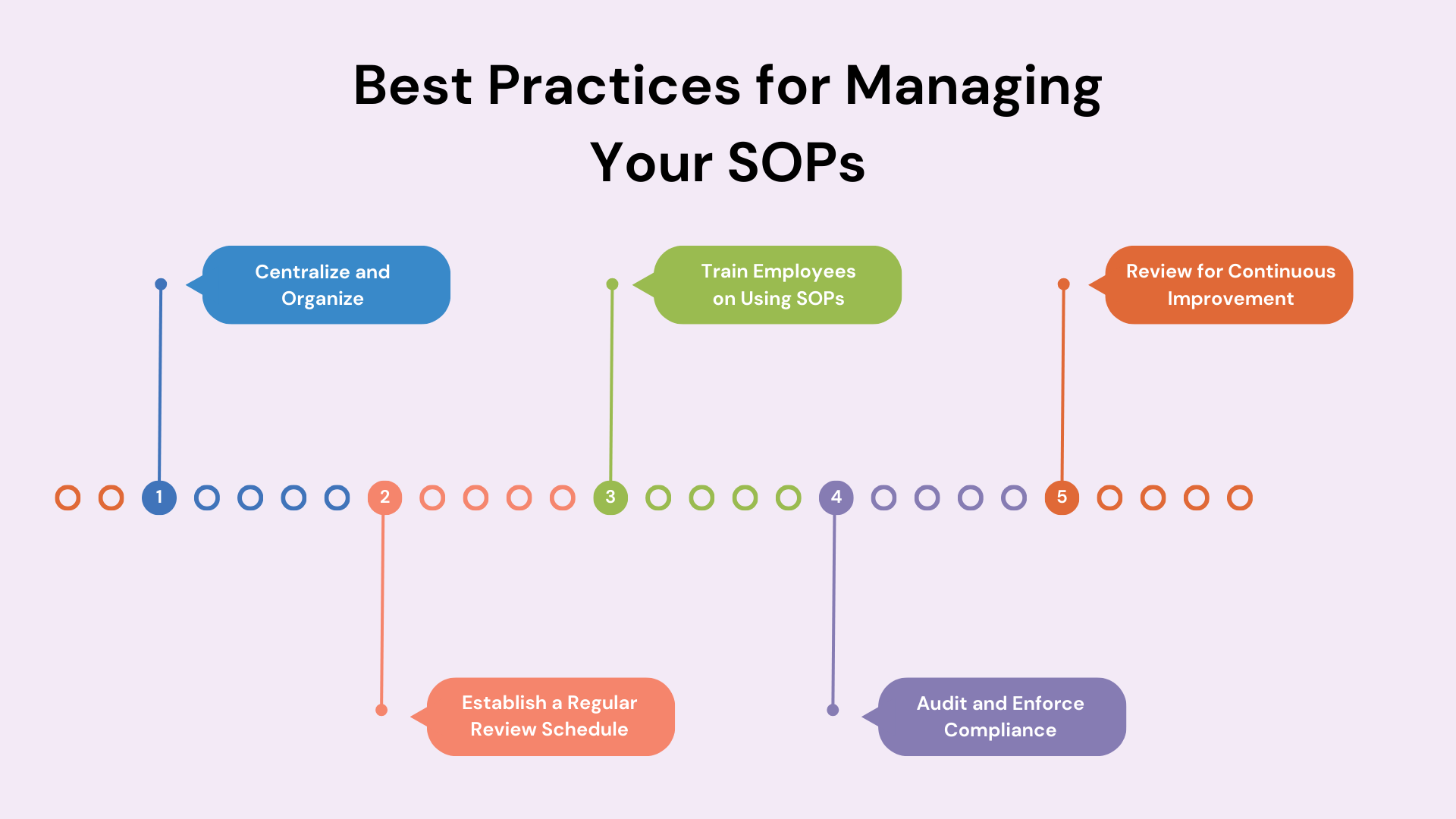
Table of Contents:
- What Exactly Is a Standard Operating Procedure (SOP)?
- Why Are SOPs So Important for Your Business?
- How to Write Effective SOPs
- Common Mistakes to Avoid When Creating SOPs
- Best Practices for Managing Your SOPs
Introduction
As an entrepreneur or business leader, you know that consistent processes and procedures are the foundation of business efficiency and scale. One essential tool for achieving operational efficiency is the Standard Operating Procedure (SOP). Standard Operating Procedures (SOPs) document your business’s key processes and policies to optimize productivity, compliance, and customer experience. Well-crafted SOPs act as a source of truth for your team and ensure consistency in execution. In this comprehensive guide, you will learn the benefits of SOPs, understand the key components, and how to develop and implement them effectively. With the right approach, SOPs can be a powerful tool for taking your business to the next level.What Exactly Is a Standard Operating Procedure (SOP)?
A standard operating procedure (SOP) is a set of step-by-step instructions compiled by an organization to help workers carry out complex routine operations.
SOPs aim to achieve efficiency, quality output, and uniformity of performance while reducing miscommunication and failure to comply with industry regulations.
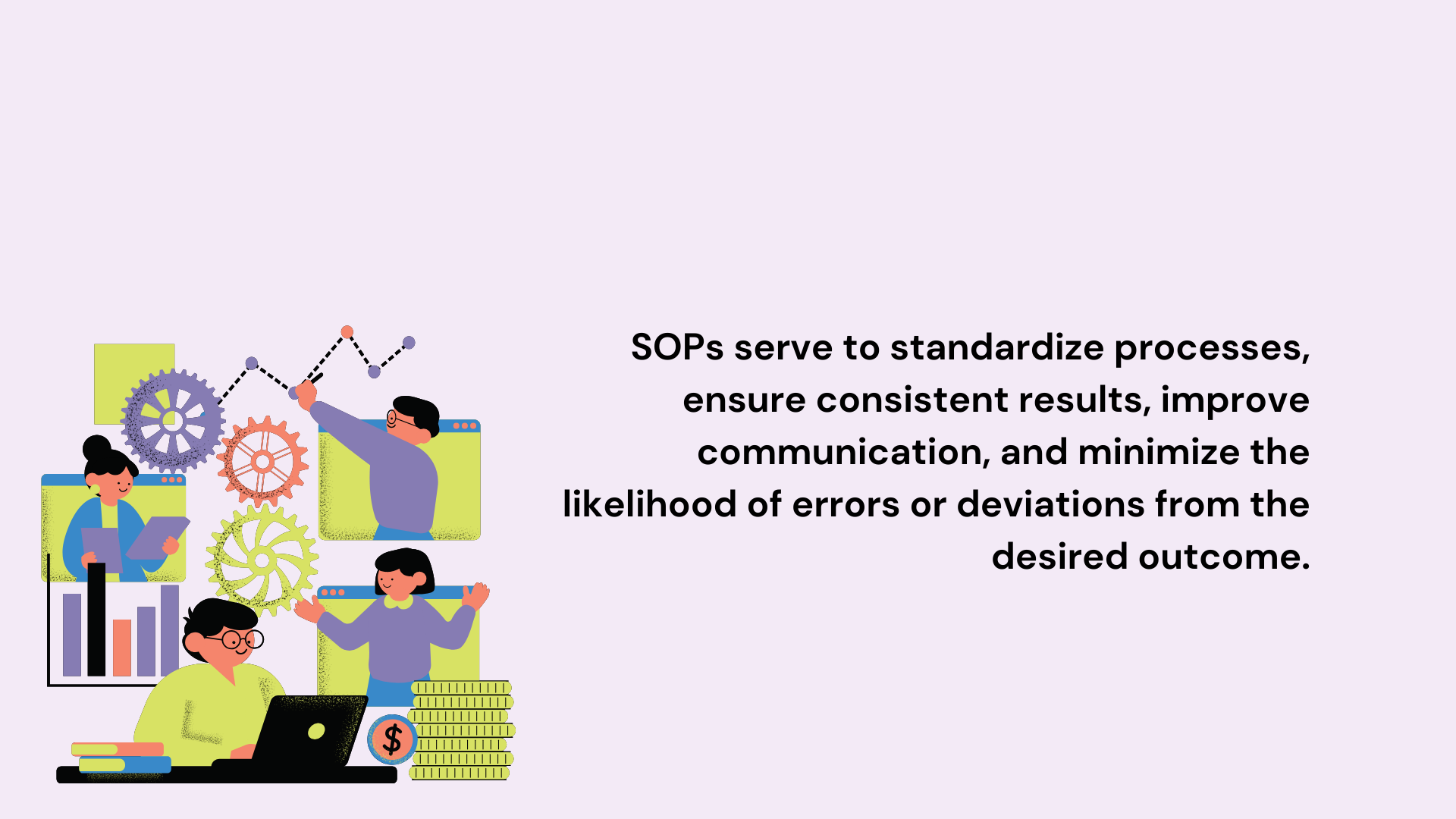
Why Are SOPs So Important for Your Business?
Standard Operating Procedures (SOPs) are essential for optimizing your business operations and growth.
Well-designed SOPs can reduce errors, improve efficiency and quality, ensure compliance, and onboard new employees faster.
Some of the key benefits of well-designed SOPs include:
Increased Productivity and Quality
SOPs establish a standardized way of performing tasks and processes. By following a proven procedure, employees can avoid wasting time figuring out the best way to do something or correcting mistakes. SOPs also specify the standardized way of performing a task, minimizing variations that could lead to defects or non-conformities. This results in higher productivity, quality, and consistency. According to surveys, 40% of a worker’s time is spent on “reinventing the wheel” - duplicating work that has already been done before. Codifying institutional knowledge into SOPs eliminates this inefficiency.Improved Compliance
SOPs serve as a reference to ensure that critical tasks are performed correctly and consistently in accordance with regulations and standards. SOPs that align with industry standards and regulations help ensure compliance and reduce the risk of violations. This is especially important for highly regulated industries to maintain compliance and pass audits. Studies show that inconsistent execution of processes leads to a 50-70% higher defect and error rate. SOPs mitigate this risk by providing step-by-step guidance.Faster Onboarding
For new hires, SOPs speed up the learning curve and onboarding process. SOPs act as a valuable training resource for new employees, enabling them to quickly learn and adopt standard practices. Instead of shadowing a coworker for days or weeks, new staff can refer to SOPs to understand how to complete their job. This allows them to become productive members of the team much faster.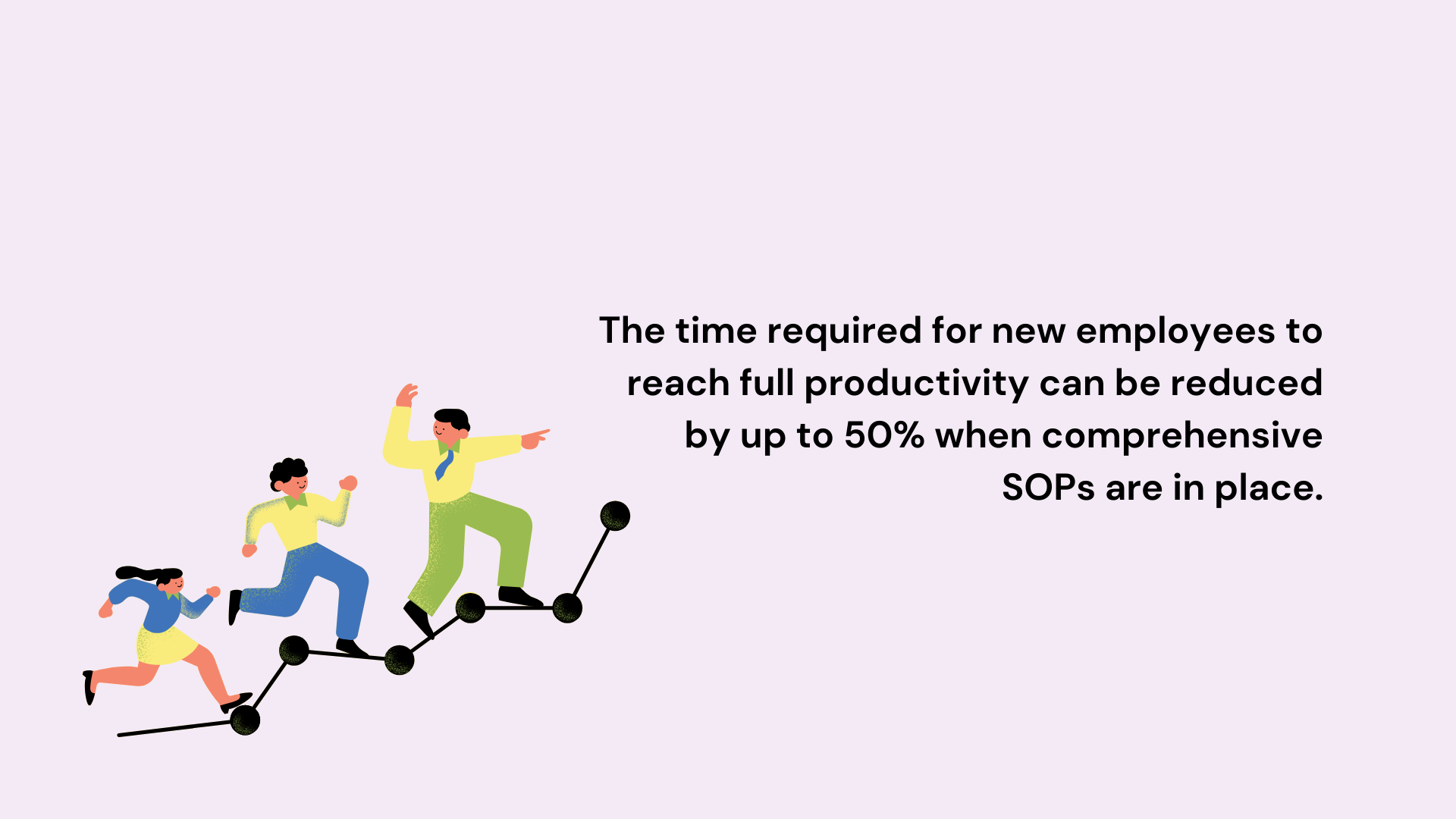
How to Write Effective SOPs
Write Clear and Concise Steps
Effective SOPs have clear and concise steps that are easy to follow. Keep steps short and focused, using an active voice and imperative tense. For example:- Identify the purpose and objective of the task.
- Gather all equipment, materials, and paperwork needed to complete the procedure.
- Start the process at the beginning and continue in a logical progression.
Use a Standard Template
A template establishes consistency and ensures important elements are included in each SOP. Components of an effective template include:- A title, procedure number, and revision date/number.
- The purpose and scope of the procedure. Describe what the SOP covers and any exclusions.
- Definitions of terms, acronyms, or abbreviations.
- Responsibilities stating who performs the procedure and who has authority or oversight.
- References noting any supporting documents or forms.
- The chronological steps to complete the procedure. Number each step.
- Visual aids such as images, photos, flowcharts, or diagrams when helpful.
- Forms or attachments if needed.
- Review and approval signatures.
Add Visuals to Enhance Understanding
Visuals are a key component in well-written SOPs. They clarify complex processes and enhance understanding. Types of visuals to incorporate include:- Images or photos showing equipment setup or the end result.
- Flowcharts map out the steps in a logical flow.
- Diagrams illustrating connections, workflows, or relationships.
- Tables organize information in an easy-to-read format.
- Checklists outlining steps for employees to mark off as they proceed.
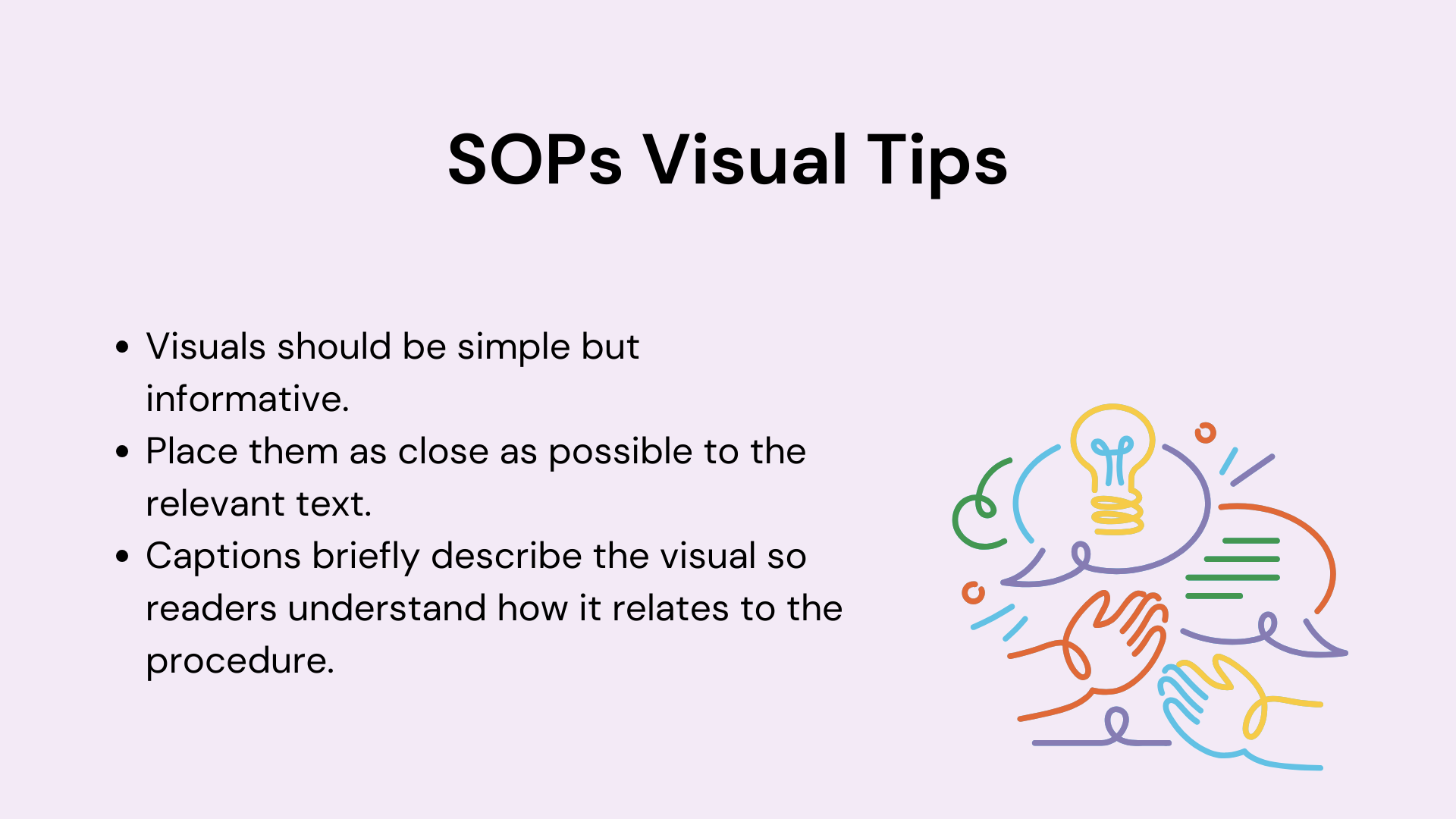
Common Mistakes to Avoid When Creating SOPs
When developing Standard Operating Procedures (SOPs), it is important to avoid common mistakes that can render them ineffective or counterproductive. Some of the most frequent errors include:
Making SOPs Too Long or Complicated
Lengthy, complex SOPs can be difficult for employees to follow and comprehend. Strive for brevity and simplicity. Focus on critical details and avoid redundancy. Use bullet points and numbered lists when possible to enhance readability.Using Excessive Jargon
Avoid specialized terminology and acronyms that may confuse readers. Explain any technical phrases. Write SOPs for a general audience with a diverse range of knowledge and experience.Failing to Review and Update Regularly
SOPs should be living documents that are reviewed and revised periodically to ensure relevance, accuracy, and compliance with the latest regulations or certifications. Best practices recommend reviewing SOPs at least annually and updating them as needed based on feedback, changes in processes or technology, new risks identified, or incidents that have occurred.Lacking Specificity
SOPs should provide clear, step-by-step instructions that specify who, what, where, when, why, and how. Avoid vague or ambiguous language. Include concrete details, examples, and visual aids like flowcharts or diagrams when possible to maximize comprehension.Neglecting to Train Employees
The effectiveness of SOPs depends on appropriate training for all staff expected to follow them. Simply distributing SOPs is inadequate. Employees should receive hands-on instruction to ensure they understand how to properly implement all protocols and procedures. Retraining may also be required when SOPs are updated or revised. By avoiding these common mistakes and pitfalls when developing SOPs, organizations can craft optimized procedures that drive efficiency, consistency, compliance, and continuous improvement.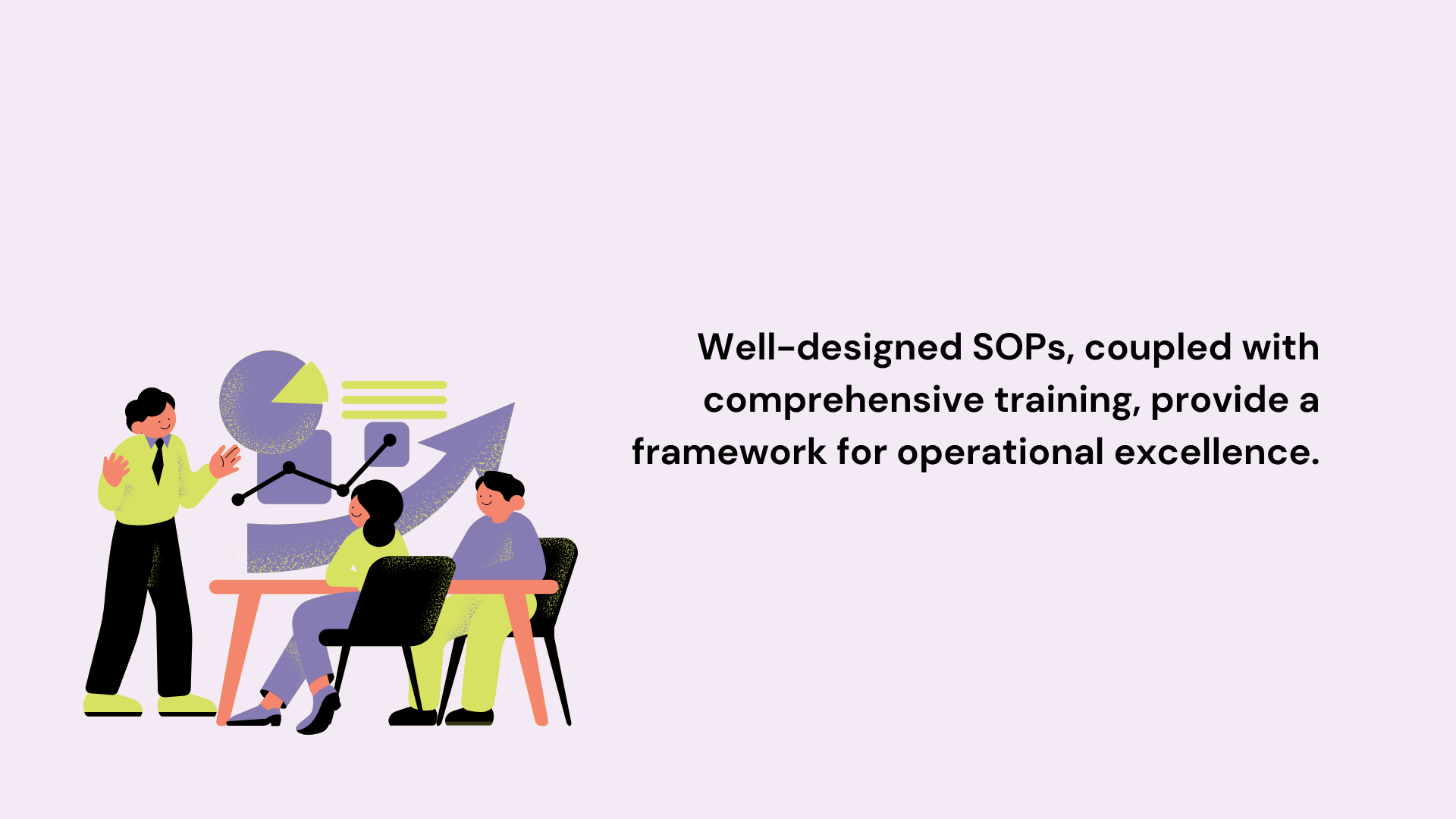
Best Practices for Managing Your SOPs
To effectively manage your SOPs, follow these best practices:
